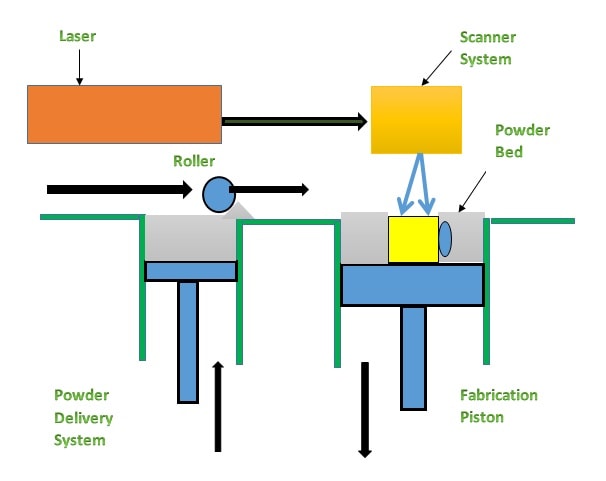Many Powder Bed Fusion devices also employ a mechanism for applying and smoothing powder simultaneous to an object being fabricated, so that the final item is encased and supported in unused powder.
- Types of 3D Printing Technology: Selective Laser Sintering (SLS)
- Materials: Thermoplastic powder (Nylon 6, Nylon 11, Nylon 12)
- Dimensional Accuracy: ±0.3% (lower limit ±0.3 mm)
- Common Applications: Functional parts; Complex ducting (hollow designs); Low run part production
- Strengths: Functional parts, good mechanical properties; Complex geometries
- Weaknesses: Longer lead times; Higher cost than FFF for functional applications
Creating an object with Powder Bed Fusion technology and polymer powder is generally known as Selective Laser Sintering (SLS). Next, a recoating blade or wiper deposits a very thin layer of the powdered material typically 0.1 mm thick onto a build platform.
A CO2 laser beam then begins to scan the surface. The laser will selectively sinter the powder and solidify a cross-section of the object. Just like SLA, the laser is focused on to the correct location by a pair of galvos.
The recoating blade deposits a fresh layer of powder on top of the recently scanned layer, and the laser will sinter the next cross-section of the object onto the previously solidified cross-sections.
These steps are repeated until all objects are fully manufactured. Powder which hasn’t been sintered remains in place to support the object that has, which eliminates the need for support structures.

Comments
Post a Comment